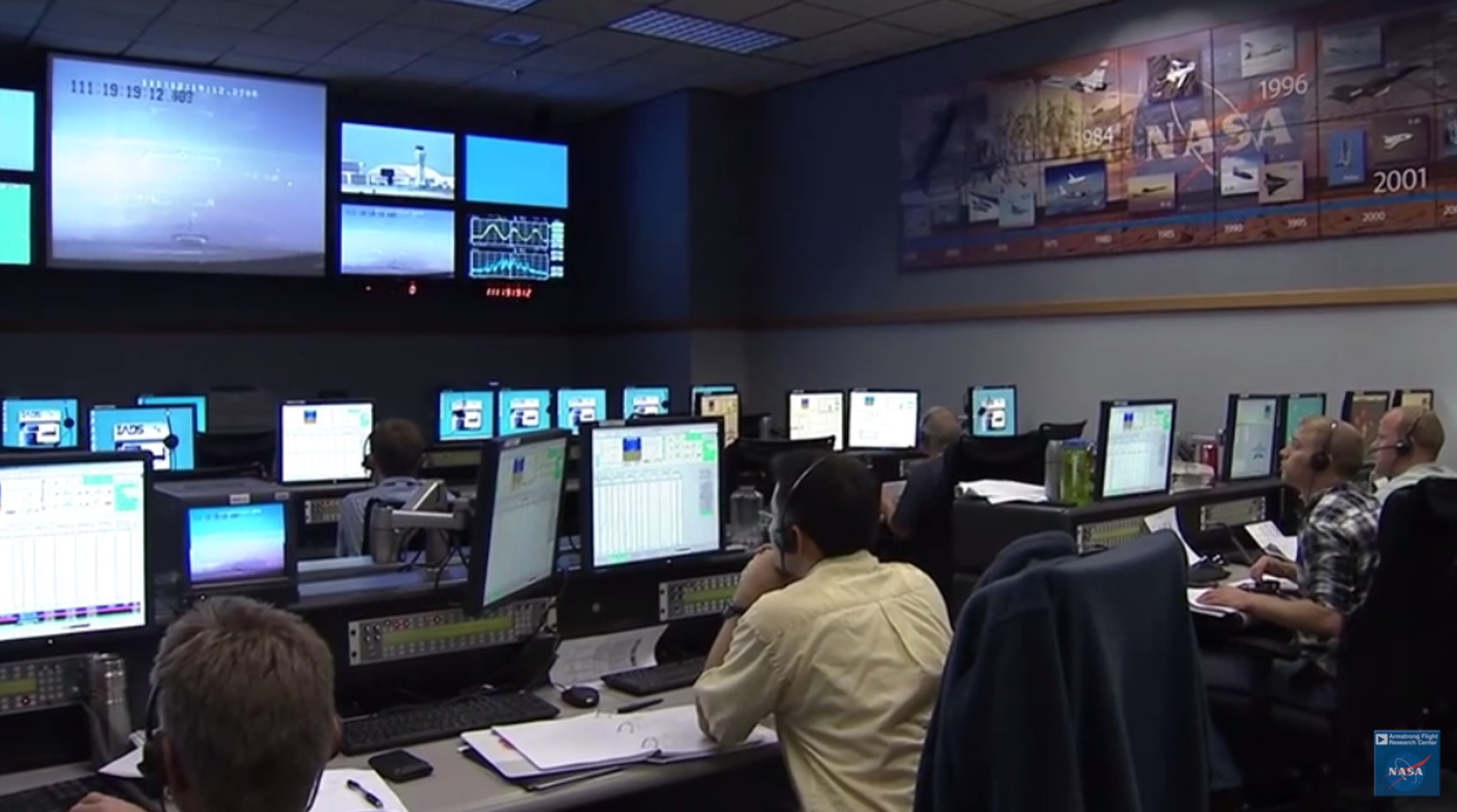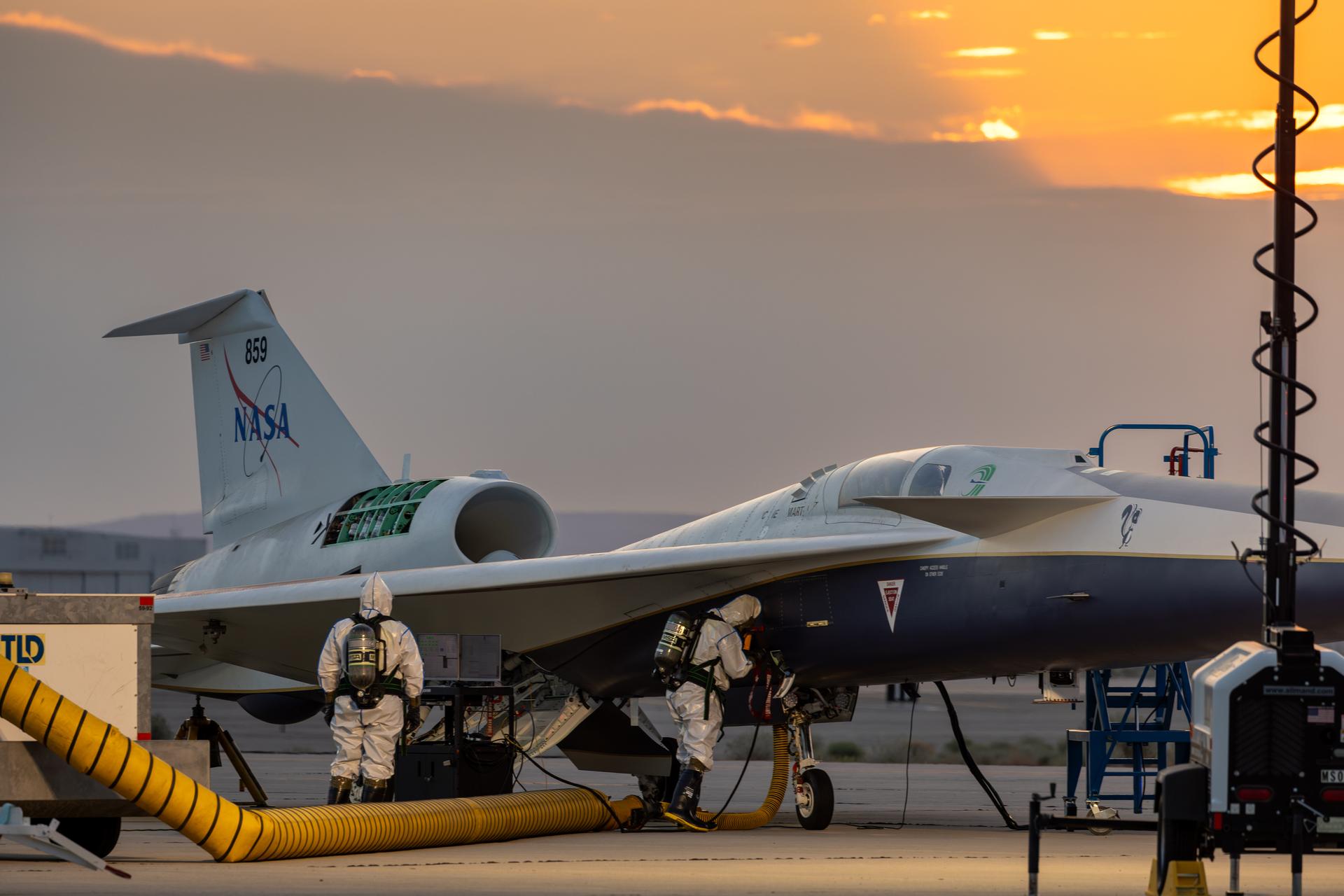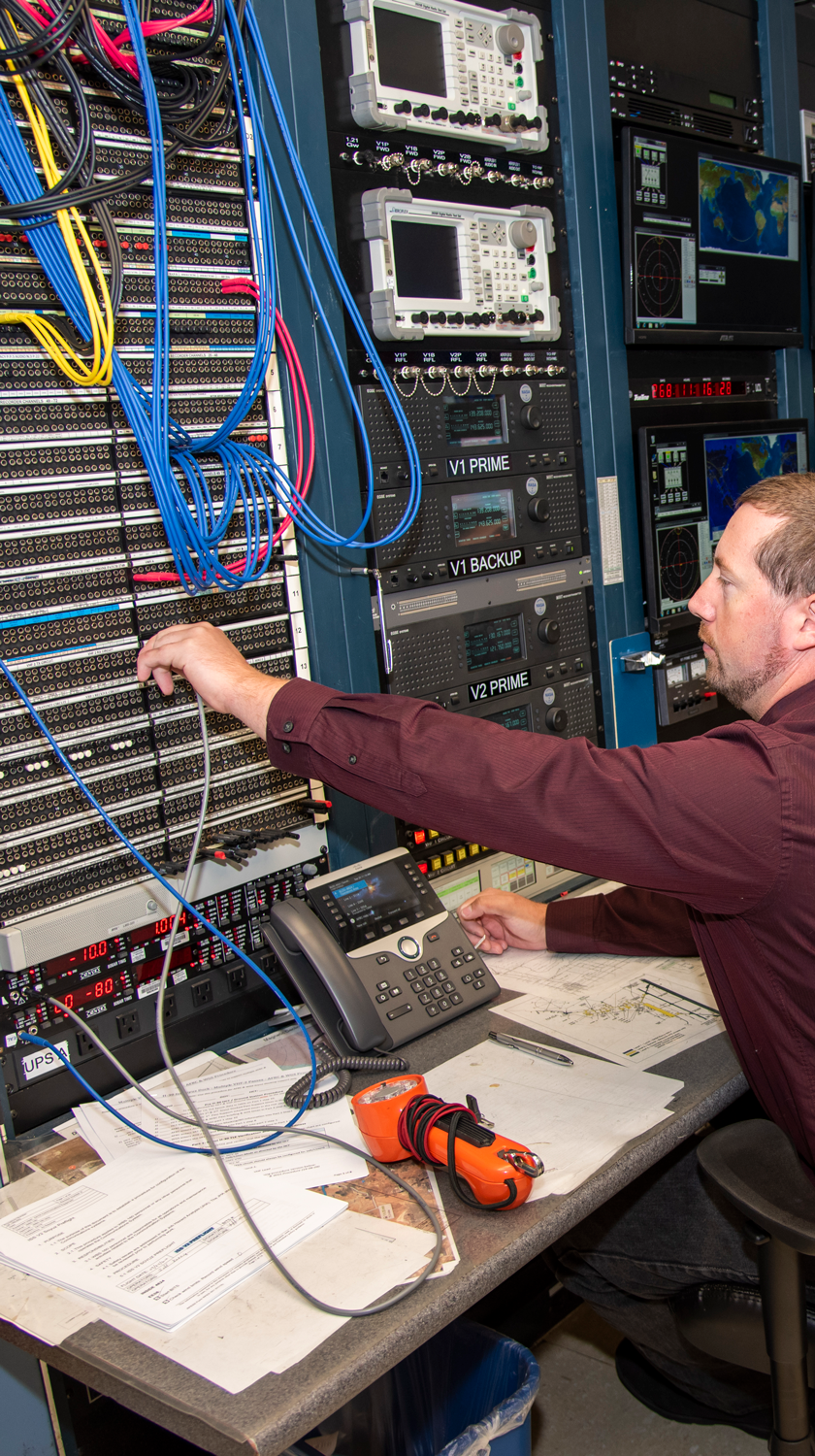The Hugh L. Dryden Aeronautical Test Range (DATR) Range Engineering Branch at NASA’s Armstrong Flight Research Center in Edwards, California, provides flight test range development services, including range systems engineering, test information engineering, and data processing and display system/software development.
The branch also maintains two mission control centers (MCCs) and provides real-time control room support services. The DATR also operates two stand-alone Range Safety Officer (RSO) stations to provide minimized MCC support for range safety monitoring. The MCCs are used by Armstrong research projects to monitor research flights for safety of flight and in-flight test point clearance. The DATR MCCs provide real-time mission operations for test conductors, research engineers, range safety, and other project personnel. Each control room position is supported by a system that displays down-linked telemetry and derived telemetry information. Also available at some control room positions are aircraft situational awareness displays based on radar data and/or GPS-embedded telemetry down-linked data. Another display shows Federal Aviation Administration (FAA)-tracked aircraft in the airspace. Each control room has voice communication systems to allow communications between control room positions as well as control room communication with aircraft pilots.
Each control room gets its data from the DATR Integrated Next Generation System (DINGS). The DINGS consists of a telemetry/radar acquisition and processing system (TRAPS), which is a collection of subsystems that act together to acquire multiple data sources, process the data, distribute the data, and store the data, The data are used to monitor the status and performance of the research vehicle. The real-time data archive is used for post-flight data reduction.
In addition to maintaining MCCs, Armstrong’s Range Engineering Branch also maintains mobile systems that are reconfigurable to support project requirements, develops small portable mobile operations facility (MOF)-type units with stand-alone capabilities for future customer support, can develop remote user MCC-type units easy to interface back to DATR systems for project use, and develops the mobile operations center at the DATR Buckhorn site for maintenance, build-up, and deployment of DATR mobile systems.
Telemetry Radar Acquisition
- Handles up to six Pulse Code Modulation (PCM) telemetry data streams
- Ability to support custom data streams (Serial, UDP)
- Handles up to 3,000,000 samples per second of data
- Handles both telemetry and radar data
- Six telemetry streams from 1 to 30 Mbps each
- Accommodates complex user computational models
Mission Control Center Display
- Two mission control stations supporting up to 25 flight test engineer display station
- Multiple display environments supported, including Symvionics Interactive Analysis and Display System (IADS)
- Test and Evaluation Command and Control System (TECCS) interfaces FAA radar data input with precision tracking radars to display target aircraft positions
- High-precision map display software for situational awareness and unique requirements, such as impact prediction
Range Safety Officer Station
- Handles up to two Pulse Code Modulation (PCM) telemetry data streams
- Handles up to 1,000,000 samples per second of data
- Handles both telemetry and radar data
- Two telemetry streams from 1 to 30 Mbps each
- Two display stations with IADS
- TECCS interfaces FAA radar data input with precision tracking radars to display target aircraft positions
- High-precision map display software for situational awareness and unique requirements, such as impact prediction
Mobile Operation Facility
- MOF1: 45-foot semi-trailer equipped with 6-foot telemetry antenna (L-band uplink, L/S-band receive), and UHF/VHF radio
- MOF2: Former X-45 MCV trailer
- RAFCAS: Omni-directional L/S/C band receive, L/S transmit
Engineering Service Support
Range Systems Engineer (RSE)
The work of a range systems engineer encompasses a diverse variety of disciplines: radar, telemetry, video, Enhanced Flight Termination System (EFTS), satellite communications, and networking. An RSE’s foremost responsibility is to identify the customer’s range engineering support requirements, institutional and/or project driven. RSEs analyze and document customer range support needs. In turn, the DATR generates options, recommends the “best” solution based on customer’s technical requirements, cost, and schedule constraints.
After identifying the final range system requirements, RSEs conduct systems engineering activities; direct, communicate, monitor, and coordinate tasks; perform necessary engineering reviews (requirements reviews, preliminary design reviews, and critical design reviews); and provide all documentation in support of the engineering task(s). The RSEs plan, develop, integrate, test, deploy, and conduct mission support until the customer is satisfied with the system. At that point, RSEs turn the system over to the DATR Range Operations Branch and/or a DATR customer.
Range Systems Engineers build and modify ground control system (GCS) trailers per research flight project specifications. At times, RSEs plan and coordinate data links to hook up customer-provided GCS to existing DATR range hardware infrastructure to meet customer requirements.
Test Information Engineer (TIE)
The primary role of test information engineers is to ensure that flight data generated during a research flight are accurately processed by the Telemetry Radar Acquisition Processing System (TRAPS) ground systems and accurately displayed in the MCC.
The engineers are the liaison between a flight research project and the DATR. TIEs work closely with project engineers and managers, and also instrumentation engineers responsible for the aircraft’s data-collecting sensors. TIEs verify that the MCC can support all of the data acquisitions during the flight and can display appropriate information at each control room position. If additional MCC capabilities are needed to meet flight project requirements, the TIE assists in coordinating the design and validation of the new or upgraded system, along with the appropriate software needed to display the telemetry data from the aircraft in the MCC.
On the day of a flight, TIEs are responsible for the correct configuration of all the data displays in the MCC, including accuracy tests of the flight data software associated with the flight. Once the TIE carries out the final checks of the MCC systems and verifies that the complete data acquisition system is flight ready, he or she will be in the MCC during the flight where data tracking, acquisition, or display issues can be resolved. If there are problems during the flight, the TIE will coordinate DATR personnel in the troubleshooting of problems until the system is fully operational again. Following the flight, the TIE coordinates efforts to verify that the recorded flight data are available for review by project engineers and researchers.
Software Development (Contract Service)
Range System and Software Engineering support is primarily related to the maintenance and improvement of the DINGS to satisfy dynamic project requirements. The DATR Software Development group provides system architecture development, software development and sustainment, systems administration, system build up and integration, and system testing for the WINGS. These systems are based on PC-based platforms, using versions of Microsoft Windows, all networked together. The Software Development group is proficient in the development and maintenance of software in the Microsoft Visual Studio .Net environment. In the area of programming languages, the primary language is C#, with some development in FORTRAN and C++.
The DINGS is increasingly involved in network-distributed processes, assets, and customers in support of integrated advanced telemetry projects such as Global Test Range, Network-Enhanced Telemetry (iNET). Some of these assets will be located on the other side of the globe and some may be space-based. Consequently, the DATR Software Development group is involved in prototyping advanced capabilities and development of new subsystems and interfaces to support communication with entities external to the test range.
Developments follow an established DATR software development process (ISO- 9001:2008 Certified), which is tailored for each development that generates only required documents. Each development is tailored by assessing risk by addressing the type of development (mission critical, real time data path) and the magnitude of development (new, major change, minor change).
For sustaining efforts, the Software Engineering group maintains 25 applications and utilities that create and manage the setup configurations used by the DINGS to acquire, distribute, analyze, and display mission data for the flight research engineer.
































